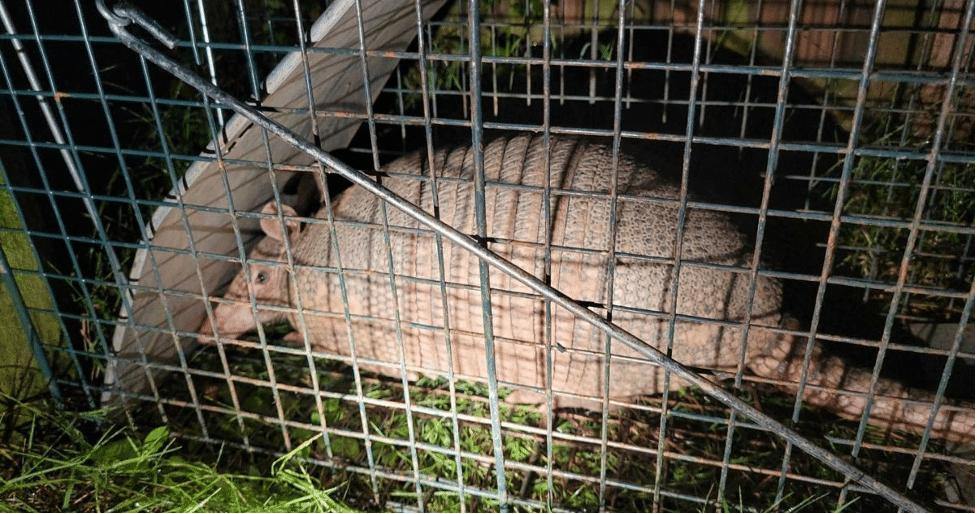Knowing humane armadillos trapping methods can help you manage the situation effectively and ethically if you find yourself dealing with armadillos in your yard. These creatures can be persistent diggers, damaging your lawn and garden, but you don’t have to resort to harmful measures. Instead, you can employ strategies that allow for safe removal while minimizing stress for the animal.
Consider using live traps to humanely trap armadillos. These traps are designed to catch the animal without inflicting harm, allowing for relocation to a suitable environment. Setting the traps in areas where you notice armadillo activity is key to increasing your chances of success.
Understanding best practices for baiting and positioning these traps will enhance your effectiveness. With the right approach, you can protect your property while ensuring that armadillos are treated with consideration.
Understanding Armadillos
Understanding armadillo behavior, habitat, and legal aspects of trapping is essential for humane armadillo trapping methods. You will learn about their natural habits and the importance of adhering to regulations when considering their capture.
Armadillo Behavior and Habitat
Armadillos are nocturnal creatures that primarily forage at night for insects, grubs, and plant materials. They can uniquely roll into a ball when threatened, which helps them evade predators. Most commonly found in warm, dry regions, they prefer habitats such as forests, grasslands, and gardens.
Their burrowing nature leads to the creation of extensive tunnel systems. These can disrupt your landscaping or property. Understanding their activity patterns can help you identify the best time for humane trapping.
Legal Considerations for Trapping
Before trapping armadillos, familiarize yourself with local laws and regulations. Many regions require permits or specific trapping methods to ensure humane practices are followed. Violating these laws can result in fines or penalties.
Select traps that comply with legal standards when using humane armadillo trapping methods. Ensure your chosen traps are appropriate for the species and effectively minimize stress and injury. Check your traps regularly to reduce the risk of capturing non-target animals.
Humane Trapping Techniques

When considering humane armadillo trapping methods, choose the right trap, effective baiting and placement strategies, and safe handling protocols. These techniques prioritize the animal’s well-being while ensuring effective removal.
Choosing the Right Trap
Select a live trap that is appropriately sized for armadillos. A trap measuring 10 inches wide and 30 inches long works well. Look for models with a one-door or two-door design, ensuring they are easy to set and release.
Key Features to Consider:
- Materials: Use traps made from sturdy wire to prevent escape.
- Safety: Ensure the trap has a locking mechanism to keep the armadillo secure without causing harm.
- Visibility: Opt for a visible trap for the animal, encouraging them to enter.
Baiting and Placement Strategies
Baiting is essential for attracting armadillos to your trap. Good options include worms, grubs, and fruits like strawberries or melons. Place the bait at the back of the trap to encourage the animal to enter fully.
Placement Tips:
- Location: Set the trap near burrows or pathways where you see armadillo activity.
- Environment: Keep the area clear of debris to make the trap more noticeable.
- Timing: Set traps in the evening, as armadillos are primarily nocturnal.
Safe Handling and Checking Traps
Check your traps regularly, ideally every few hours. This minimizes stress on the captured armadillo and prevents potential harm. Wear gloves when handling the trap to protect yourself and the animal.
Safety Procedures:
- Release: Relocate captured armadillos at least 5 miles away from their original location to prevent them from returning.
- Transport: Cover the trap with a blanket to reduce stress while transporting.
- Legal Compliance: Ensure your trapping methods comply with local wildlife regulations to avoid potential fines.
Relocation and Post-Trap Care

After trapping an armadillo, proper relocation and care are essential to ensure the animal’s safety and well-being. Choosing the right relocation site and providing aftercare are critical steps in this humane process.
Evaluating Relocation Sites
When selecting a relocation site for trapped armadillos, consider habitat, food availability, and distance from urban areas. Armadillos thrive in environments with ample cover, like wooded areas or fields.
Important criteria for relocation sites:
- Natural habitat: Look for areas rich in vegetation and shelter.
- Food resources: Ensure that insects and grubs are plentiful.
- Distance: Relocate at least 10 miles away from the capture location to prevent the animal from returning.
In McKinney, check local laws and guidelines to ensure that relocating trapped armadillos complies with regulations.
Relocation Best Practices
Once you’ve identified a suitable site for relocation, follow these best practices to facilitate a smooth transition.
- Timing: Relocate during daylight when armadillos are usually less active.
- Transport: Use a sturdy, well-ventilated cage for transport. Ensure the animal feels secure.
- Release: Set the trap on the ground in the new location and open the door, allowing the armadillo to exit at its own pace.
Monitoring the area post-release can be helpful. This lets you understand how well the armadillo adapts to its new environment.
Aftercare for Released Armadillos
After their release, armadillos may need time to acclimate to the new surroundings. Observe them from a distance to minimize stress.
- Provide food: If possible, scatter some food sources initially, like insects or fruits, to aid their adjustment.
- Avoid interference: Allow them space to explore without constant human presence, as overexposure can lead to anxiety.
Consider contacting a professional service if you encounter challenges or have questions about humane trapping and relocation. Critter Stop has a fantastic reputation and online customer reviews because it provides high-quality work and great customer service. For help, call Critter Stop at (214) 234-2616 for a free inspection and ensure the humane removal of wildlife from your property.
—
